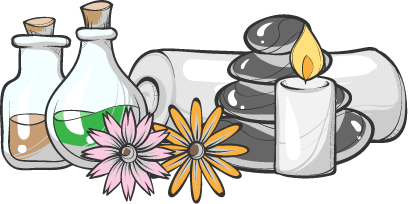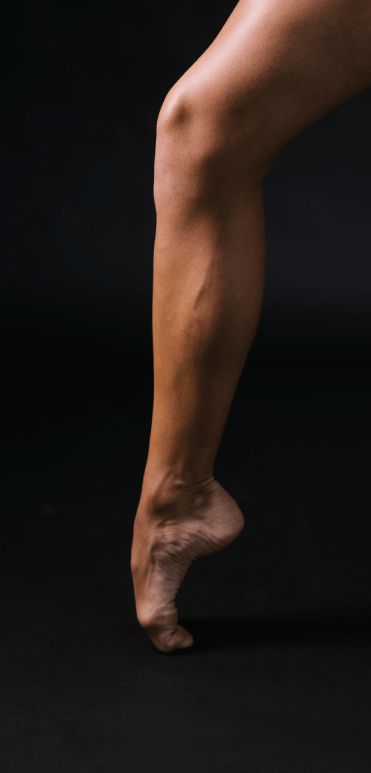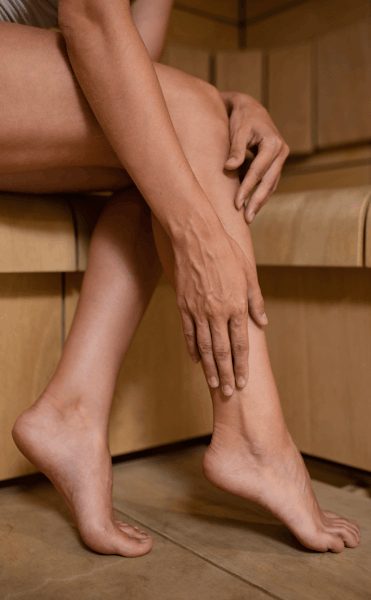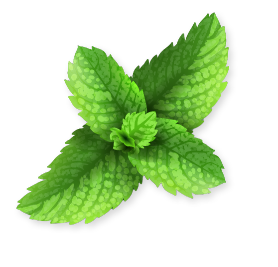AYURVEDIC TREATMENT FOR VARICOSE VEINS IN KERALA
Varicose veins show up as painful, swollen and twisted veins, mainly on the legs. For those on the lookout for holistic treatments without any side effects, there are a variety of ayurvedic treatments for varicose veins in Kerala. These could include Panchakarma therapy, abhyanga, kizhi massages, shirodhara and certain yoga asanas designed to improve circulation and varicose veins. One of the best varicose veins treatments in Cochin, Kerala is available at the Sanjeevanam Ayurveda Hospital.

WHAT ARE VARICOSE VEINS
Varicose veins are swollen, twisted veins, often appearing on legs, ankles, and feet, caused by damaged valves and poor circulation. Common in females, they can result from hormonal changes, aging, obesity, and a family history of varicose veins. Symptoms include aching, cramping, and itchiness. Treatment options include compression stockings, laser therapy, surgery, and lifestyle changes. Varicose veins, though a cosmetic concern, require treatment to prevent potential health issues.
SIGNS & SYMPTOMS OF VARICOSE VEINS
- Purple/blue, swollen, twisted, enlarged veins
- Aching or cramping in the legs
- Heaviness/tiredness in the legs
- Itchiness around the affected veins
- Discoloration/inflammation near the veins

CAUSES OF VARICOSE VEINS
- Weak or Damaged Valves:
Varicose veins often result from weakened or damaged valves in the veins. When valves malfunction, blood can pool in the veins, causing them to enlarge and become varicose. - Heredity (Genetic Predisposition):
A family history of varicose veins increases the likelihood of developing them. Genetic factors can influence the strength and integrity of vein walls and valves. - Age:
The risk of developing varicose veins tends to increase with age. Over time, wear and tear on veins can contribute to valve damage and reduced elasticity. - Gender:
Women are more prone to varicose veins than men. Hormonal changes associated with puberty, pregnancy, and menopause can affect vein health. - Pregnancy:
The increased blood volume during pregnancy, as well as pressure on the pelvic veins by the growing uterus, can contribute to the development of varicose veins. - Obesity:
Excess weight puts additional pressure on the veins in the legs, increasing the risk of valve dysfunction and varicose veins. - Occupational Factors:
Jobs that involve prolonged periods of standing or sitting may contribute to the development of varicose veins, as they can impede proper blood circulation. - Other Risk Factors:
Hormonal changes from birth control pills or hormone replacement therapy.
Previous blood clotting in deep veins (deep vein thrombosis).
Conditions that increase abdominal pressure, such as chronic constipation or tumors.

RISKS OF VARICOSE VEINS
In majority of cases, varicose veins do not present with serious health concerns. However, there are some associated risks in some people which could lead to complications that require medical attention. Varicose veins can lead to development of DVT in some cases along with formation of clots – which can become fatal if they reach the lungs. Since varicose veins are close to the skin surface, there is greater risk of bleeding and formation of ulcers or infected sores upon leg injury in such people. It can also lead to ankle swelling, especially in those who are obese, pregnant or older aged.

WHEN TO SEE A DOCTOR FOR VARICOSE VEINS
Consider seeing a doctor if you experience any of these symptoms:
- If you experience leg pain or discomfort from bulging varicose veins or tender lumps or swellings, it’s better to seek medical attention.
- Since varicose veins are close to the skin surface, they can get injured easily and tend to bleed a lot. Show a doctor immediately.
- If you notice any changes around the varicose veins such as discolored hard and dry/itchy skin or any new spots or rashes, then do show your doctor.
- People with varicose veins have a higher risk of developing deep vein thrombosis (DVT) and the risk of blood clots in deeper veins; these can prove to be dangerous if they get to the lungs and require immediate attention.
- If you develop open sores or leg ulcers close to varicose veins, there is a risk of deeper infections and it’s important to get them treated at the earliest.
- Varicose veins can also arise during pregnancy, resulting in leg pain and ankle swellings. Do seek medical attention if you feel weak legs or see twisted blue/purple color veins developing while you are pregnant.
- If you have varicose veins and your legs are feeling heavy, better to consult a doctor early on.

HOW AYURVEDA
CAN TREAT VARICOSE VEINS
According to ayurvedic treatment for varicose veins in Kerala, it is caused by an imbalance in the Pitta and Kapha doshas in the person. Here is a look at some of the best ayurvedic treatments for varicose veins in Kerala:
Ayurvedic medicines
Some of the ayurvedic medicines for varicose veins in Kerala include Triphala which is a mixture of 3 fruits that promote blood circulation and healthy veins. Guggulu and Gotu kola are two other ayurvedic herbs for varicose veins that work by reducing inflammation and swelling and improving blood circulation. These ayurvedic medicines can be taken orally or applied topically over the affected areas.
Panchakarma
Panchakarma treatment is an ayurvedic purification therapy that eliminates toxins from the body. It includes various massages, herbal steam baths and some other therapies that improve overall blood circulation too.
Abhyanga
Abhyanga is another form of full-body oil massage with special herbal oils that improve blood circulation, reduce inflammation, strengthen the varicose veins and repair damaged nerves.
Kizhi
Kizhi is a type of warm herbal poultice massage where herbs tied up in muslin cloth and dipped in warm oil are used to massage the affected areas. It helps in reducing pain, inflammation and swelling.
Yoga
Certain yoga poses and low-impact exercises can strengthen the veins and improve blood circulation. The Viparita Karani (legs up the wall) and Supta Padangusthasana (reclining hand-to-big-toe) yoga poses are known to be effective in enhancing blood flow to the legs and improving varicose veins.
FREQUENTLY ASKED
QUESTIONS
Can ayurveda cure varicose veins?
The 5000-year-old science of ayurveda has a variety of remedies for treating various levels of varicose vein problems. Your ayurveda practitioner can create a multi-pronged treatment module for you that could include oral medications, herbal pastes for topical application, a variety of unique massages aimed at rejuvenating blood circulation of the affected area, aside from specific yoga poses too.
Can varicose veins be prevented?
Yes, varicose veins can be prevented from developing by engaging in an active lifestyle and following a diet rich in fibers, anti-oxidants as well as anti-inflammatory elements. Availing of regular Panchakarma therapy also ensures that there are no toxin accumulations in your blood and your blood circulation flows smoothly. This is especially useful in those with a family history of varicose veins.
Can varicose veins go away on their own?
In a number of cases, varicose veins do not pose any problems or cause any pain. While they do not go away completely, they can become less visible. The smaller spider veins could take up to 3-6 weeks while varicose veins could take up to 3 to 4 months before disappearing. Pregnancy-associated varicose veins usually disappear 2-3 weeks after delivery.
How long does it take to see results after ayurvedic varicose vein treatment?
Ayurvedic varicose vein treatment with oral and topical medications and special massages can be highly effective. Keeping in mind that varicose veins take time to develop, it usually takes just 2 to 3 weeks for the pain, inflammation and swelling to disappear too with ayurvedic therapy. Within this time period, you will begin to feel at least 75% better.
Can exercise help prevent varicose veins?
While exercise can’t cure varicose veins, it can definitely improve your symptoms by improving circulation and toning up your muscles. This would in turn prevent the development of new varicose veins. Low-impact exercises like walking, biking and swimming are all great for your circulation and joints and improve circulation in existing varicose veins. And hopefully prevent new varicose veins!
BOOK APPOINTMENT
























